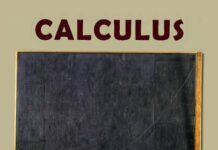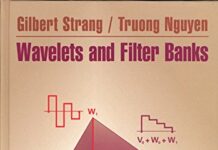
Ebook Info
- Published: 2007
- Number of pages: 750 pages
- Format: PDF
- File Size: 10.41 MB
- Authors: Gilbert Strang
Description
Encompasses the full range of computational science and engineering from modelling to solution, both analytical and numerical. It develops a framework for the equations and numerical methods of applied mathematics. Gilbert Strang has taught this material to thousands of engineers and scientists (and many more on MIT’s OpenCourseWare 18.085-6). His experience is seen in his clear explanations, wide range of examples, and teaching method. The book is solution-based and not formula-based: it integrates analysis and algorithms and MATLAB codes to explain each topic as effectively as possible. The topics include applied linear algebra and fast solvers, differential equations with finite differences and finite elements, Fourier analysis and optimization. This book also serves as a reference for the whole community of computational scientists and engineers. Supporting resources, including MATLAB codes, problem solutions and video lectures from Gilbert Strang’s 18.085 courses at MIT, are provided at math.mit.edu/cse.
User’s Reviews
Editorial Reviews: Review ‘Gil Strang has given the discipline of computational science and engineering its first testament in this new and comprehensive book. It surely extends Gil’s long tradition of practical, wide-ranging, and insightful books that are invaluable for students, teachers, and researchers alike. If you could have only one book on a desert island, this might be it.’ William Briggs, Professor of Mathematics at University of Colorado at Denver, and SIAM Vice-President for Education Book Description This book encompasses the full range of computational science and engineering from modelling to solution, whether analytic or numerical. About the Author Gilbert Strang received his Ph.D. from UCLA and since then he has taught at MIT. He has been a Sloan Fellow and a Fairchild Scholar and is a Fellow of the American Academy of Arts and Sciences. He is a Professor of Mathematics at MIT and an Honorary Fellow of Balliol College. Professor Strang has published eight textbooks. He received the von Neumann Medal of the US Association for Computational Mechanics, and the Henrici Prize for applied analysis. The first Su Buchin Prize from the International Congress of Industrial and Applied Mathematics, and the Haimo Prize from the Mathematical Association of America, were awarded for his contributions to teaching around the world. Read more
Reviews from Amazon users which were colected at the time this book was published on the website:
⭐How does one write a review on a computational science book, an academic area that to many is obtuse? Well, first, as a non-engineer or computational scientist, that I even understood enough to write a review speaks volumes to the clarity of this text. It does require a fundamental understanding of linear algebra and calculus. However, even in that regard, I imagine one could easily review the fundamentals either through Prof Strang’s recent text (Differential Equations and Linear Algebra) or elsewhere. This book is a useful, actually essential, companion to his online OCW 18.085 course. It presents the facts around how continuous equations of calculus are discretised with linear algebra. It highlights how linear algebra, due to the fact of linearity, allows many non-linear and real world problems to be described and approximate solutions derived. However, the major element that makes this text different is the approach Prof. Strang adopts in his linking of linear algebra to the real problems he examines. It is a combination of passion for the subject area, an engaging and prosaic style of writing, and an approach at the frontier of teaching what in the past have been disparate and (in my experience) rather dull subject areas. This book perfectly illustrates the reality that linear algebra and the techniques it offers science is on the frontier of computation and real world analysis. This reality opens a vacuum for what is both a grounding and springboard text. However, the text also clearly takes the concepts raised to a depth mathematically that would satisfy all but the most trenchant purist. The problem sets are useful in developing concepts and are more than the often-found trickiness in other texts. They are accompanied by guiding comments, in places and solutions are available online, to allow more depth. I also note that the text represents many years experience of teaching and reflective analysis. One cannot conclude a review without also noting the quality of Prof Strang’s academic credentials. Even a casual look at his CV illustrates that he is a luminary in that field. I also note that his ‘academic ancestry’ (doctoral supervisors) include mathematicians like Gauss, Hilbert and others around 8 steps back. This book has made me want to pursue the area further and, I hope, that alone would help people contemplate this as a course text or a highly useful addition to the serious student of applied mathematics library.
⭐Even though I love Prof. Strang for making his lectures available for people like me and even though I liked his linear algebra book, I can not say that this book is excellent. I think that he puts too many topics in one book without giving enough details or depth on any of them. The book is more like a collection of lecture notes rather than a book. If you like to study linear algebra, use his linear algebra book. If you study finite difference method for PDEs, Hoffman’s is a much better choice. For numerical linear algebra, there is the book by Trefethen.So, my suggestion for you is as follows. Pick up the book from a library. And go straight to a topic that you are somewhat familiar with. And try to see if Prof. Strang does an excellent job on that topic. I did that for a few of them, and I found that the book is not sufficient explaining those topics.By the way, for CG method neither the book nor the video lectures are very useful. You will need the article by Jonathan Richard Shewchuk. You can find it online. This is the best for CG.
⭐While I’ve only used this text for a couple of weeks, I find that it supports the MIT 18.085 video lectures nicely (which is it’s purpose). It has been over 30 years since I had calculus and linear algebra, so this text makes for a good review and then some. The exercises with MATLAB (Octave in my case) is giving me great exposure to computational methods used by universities today. (I had previously been a Mathcad and C# user). The topics do move rapidly.
⭐Purchased book to help me follow the online MIT 18-085 lecture series by Strang. Am only five lectures into the series and have found the book to be helpful. Would like to locate a solutions manual for the problems so I can check my work. Purchased book “used” from HPB-Dallas for $54. The book I received was new unused!
⭐As always, W. Gilbert Strang is a master at explaining difficult conceptsHe covers all relevant material including a quick overview of the basic introductory linear algebra that would be (and possiblyshould be) a prerequisite for the material.The lecture series available at the open course ware site at site of mit fits in perfectly with the book.For some one who likes to study on ones own, the book and the available lecture series are perfect.
⭐This book tries to mash so much between the covers that Strang fails to start from the fundamentals and work systematically towards the solution/theorem. Each section reads much more like a concise list of things you shouldn’t forget if you’ve already learned the topic, rather than trying to explain it to someone who is new to the material. It reads much like a professor’s lecture notes that they would write to themselves to just remind them what to say, rather than the long explanation they would put on the blackboard so their students (who have never seen the material before) would understand. So it might be a good refresher book, but don’t get it expecting to learn solely from this textbook.
⭐I use this to assist me with setting up problems and calculations
⭐Dr Strangs book, is simply a work of love. If you have no idea of computational engineering, yet you want to see a man who had spent a lifetime in love, and still burried deep within it, experience Dr Strang’s words. Pure and perfect. His style unparalleled, his passion unbounded. It needs to be there on every engineers desk, regardless of his discipline.
⭐Der Author ist ein versierter und erfahrener Didakt, das sieht man auf den vielen Youtubevideos seiner Lehrveranstaltungen. Das Buch versucht den Geist der Lehrveranstaltungen aufzufangen, was ihm gur gelingt. Das ganze geht allerdings auf Kosten eines systematischen Aifbaus.Als Ergänzung zu Standardwerken mit großem Gewinn zu lesen. Als alleiniges Lehrwerk schwierig.
⭐
⭐Good book with loads of chapters from many different fields. Nest if you watch the corresponding MIT lectures.
⭐This will get started with your MIT OCW Course – Dr Strang Taught that course and you can take it for free.
⭐You have to follow prof. Strang videos to appreciate the book.It is very difficilt to read it by yourself, you need to already know linear algebra and basic differential equations.
⭐Great book
Keywords
Free Download Computational Science and Engineering 1st Edition in PDF format
Computational Science and Engineering 1st Edition PDF Free Download
Download Computational Science and Engineering 1st Edition 2007 PDF Free
Computational Science and Engineering 1st Edition 2007 PDF Free Download
Download Computational Science and Engineering 1st Edition PDF
Free Download Ebook Computational Science and Engineering 1st Edition



